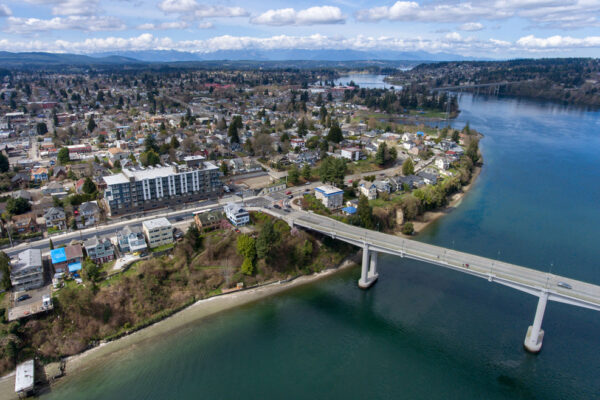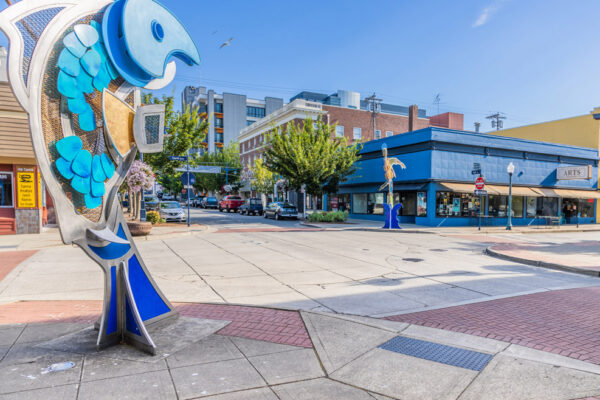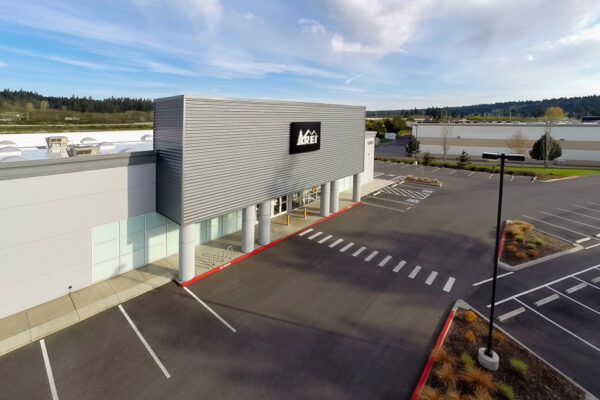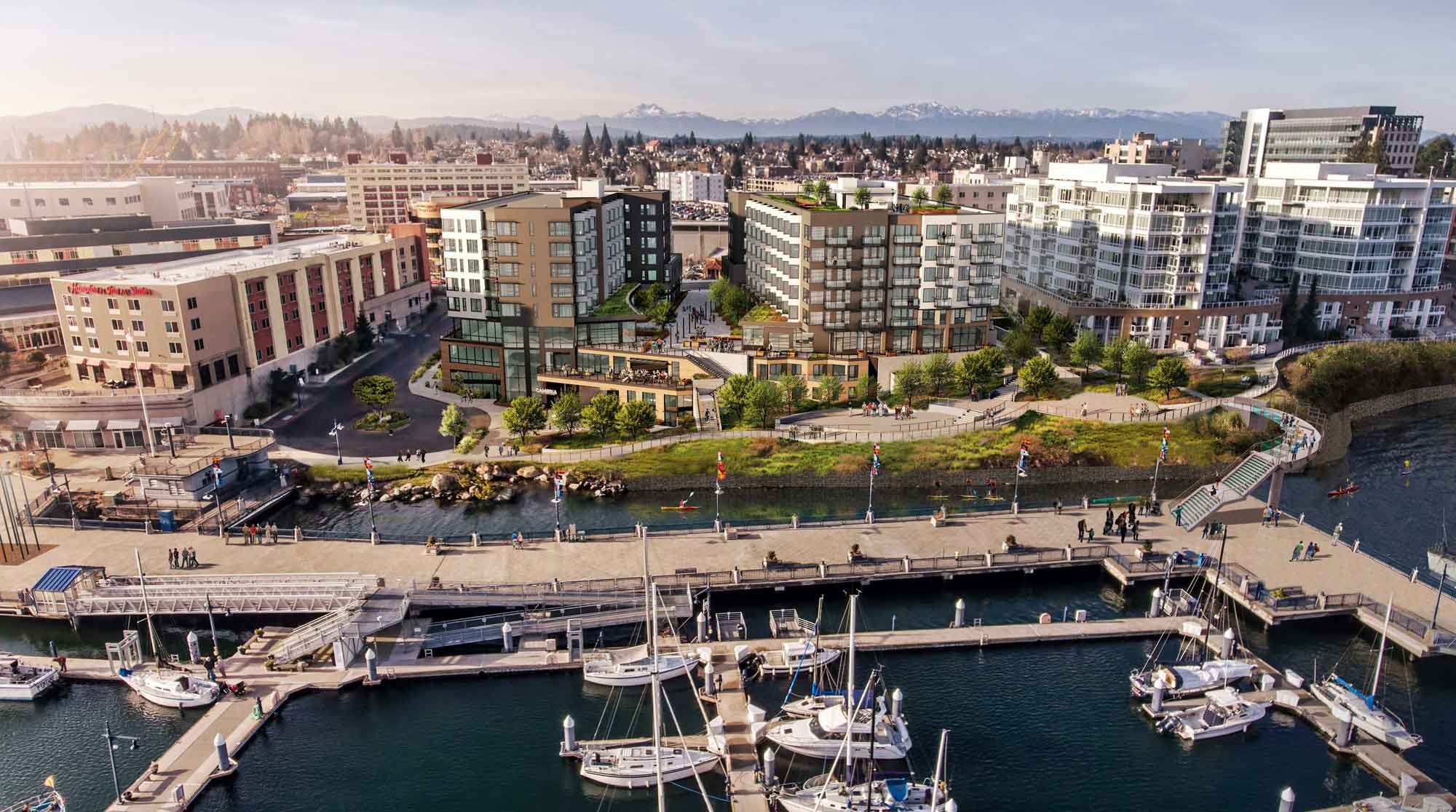Source: Puget Sound Business Journal
by: Marc Stiles
Posted: March 1, 2019 3:00 am
Opportunity zones are the hot new topic nationally, but most real estate professionals are still trying to wrap their heads around the complicated federal tax incentive program that is about to dramatically alter investing.
Then there is Arthur “Wes” Larson of Bremerton.
His Sound West Holdings LLC plans to break ground this spring on an approximately $129 million Bremerton waterfront development, Marina Square, in one of Washington’s 139 designated opportunity zones.
It’s one of the first opportunity zone projects in the country.
Bringing jobs and housing to his hometown through the opportunity zone program
fires up the longtime Bremerton developer. He’s so stoked about the potential he’s pursuing two more opportunity zone projects, one in Bremerton down the street from Marina Square called Quincy Square and another in nearby Port Orchard.
“(The program is) the most powerful revitalization tool that exists,” Larson said, adding that it forces investors to look at low-income communities rather than automatically seek out investments in boom neighborhoods like South Lake Union or downtown Bellevue.
A boon for the industry
Part of the Tax Cuts and Jobs Act of 2017, the opportunity zone program directs long-term investment to low-income communities even in Seattle.
Smartcap Group, a Redmond-based private equity real estate investment company, has raised $10 million from around 125 investors for an OZ industrial project in Arlington but is looking at Seattle’s Sodo industrial neighborhood, company CEO Tim Shoultz said.
“Sodo is a really hot market,” Shoultz said. Even so, he thinks it will be at least a year before the impact the OZ program is realized because program rules are still being written, causing caution among big institutional investors. “Once the market settles out the real potential for growth in places like Seattle will emerge,” he said.
Opportunity zones are a supply-side economist’s dream come true. If the stars align, a virtuous cycle of economic development and job creation is created as capital gains from opportunity zone investments are funneled back into new enterprises in the same community. Investors can shelter the capital gains only if they stay in a deal long term, giving communities protection from fix-and-flip schemes.
The program is still taking form. The Internal Revenue Service and Treasury Department did not issue the proposed opportunity zone regulations until 10 months after President Donald Trump signed the landmark tax act.
“It seems like in the last couple months it’s really gotten some legs,” said Jim Bowles, president of Lee & Associates’ Northwest operations. He said the market faces a learning curve with himself having spent hours poring over the rules.
An opportunity zone investment requires long-term commitment — ideally 10 years — plus further investment in the enterprise itself.
“It isn’t the right investment tool for everybody,” Bowles said.
Rural and urban opportunities
Washington’s opportunity zones stretch from a mammoth swath of the Olympic Peninsula to all of Garfield and Columbia counties in Southeast Washington. In between are zones across the central Puget Sound region.
Already across Washington there’s an eclectic mix of proposed projects, including the Quinault Indian Nation’s plan to build the state’s first transoceanic cable landing in 20 years, and a lot of interest, said Sarah Lee, a project director of the state Department of Commerce, which led the selection of Washington’s opportunity zones.
“We get calls every day from people who want to learn more,” she said.
The Othello neighborhood in Seattle is an opportunity zone, so the program has caught the attention of developers like Jake McKinstry. His company, Spectrum Development Solutions, and fellow Seattle firm Laird Norton Properties are developing a mixed-use building with 176 lower-cost apartments over a Seattle Children’s health clinic. It is part of the larger Othello Square development.
While the project was planned before Othello became a designated opportunity zone, the program certainly is a key component of the development’s viability, McKinstry said.
Jim Warjone, former chairman and CEO of global wood products company Port Blakely, is co-owner of Seattle real estate company Engel & Völkers and he’s marketing for sale a 137-acre industrial air park next to Grant County International Airport, which is in an opportunity zone in Moses Lake.
Warjone said the park could be $100 million just for the land, making it an opportunity fit for institutional investors. But Warjone said some of them are holding back until they learn more about the program — from how to legally create an investment, to how long a team has to develop a project to figuring out the exit strategy.
Opportunity zone rule clarifications still are trickling out, said Michael D’Onofrio, managing director of Florida-based Engineered Tax Services, a national firm that specializes in taxes and investments.
The thing most investors are asking D’Onofrio is where they can find high-quality, shovel-ready opportunity zone projects in areas “where the tide seems to be rising in that entire area.”
That’s why Bremerton is attractive.
The city’s downtown has seen significant public and private development, including a conference center, hotel and restaurants along the new waterfront.
In 2017, fast-ferry service to Seattle began, cutting travel time to Seattle in half. Kitsap Transit will add two new vessels this year.
In addition the U.S. Navy has committed to investing billions of dollars over 20 years to modernize the Puget Sound Naval Shipyards, where nearly 14,500 people worked as of mid-December.
Nearby is Larson’s Marina Square site, today a parking lot. It will have a 125-room Cambria Hotel and 145 high-end apartments. They will be in mid-rise buildings atop an underground, paid parking garage a short walk from the ferry dock and shipyard.
“The opportunity zone is a critical part of our project financing,” Larson said. (“It’s) a great way to bring capital to places that need it, and that does put us on equal footing with a project in Seattle.”
How opportunity zones work
The program’s goal is to incentivize long-term investment in underserved communities by allowing investors to defer paying taxes on capital gained from enterprises in designated opportunity zones.
Investors must re-invest in an enterprise via a Qualified Opportunity Fund (QOF), which is either set up as a partnership or corporation.
The extent of the tax shelter depends on how long the investor retains their investment. Following five years of ownership, 10 percent of capital gains is excluded from taxation. Another 5 percent of the capital gain is extended after seven years of ownership. Investors who make it to 10 years owe no taxes for all QOF investments.
Up to 25 percent of the low-income census tracts in each state can be designated as opportunity zones. Gov. Jay Inslee directed the state Department of Commerce to develop the selection process.





